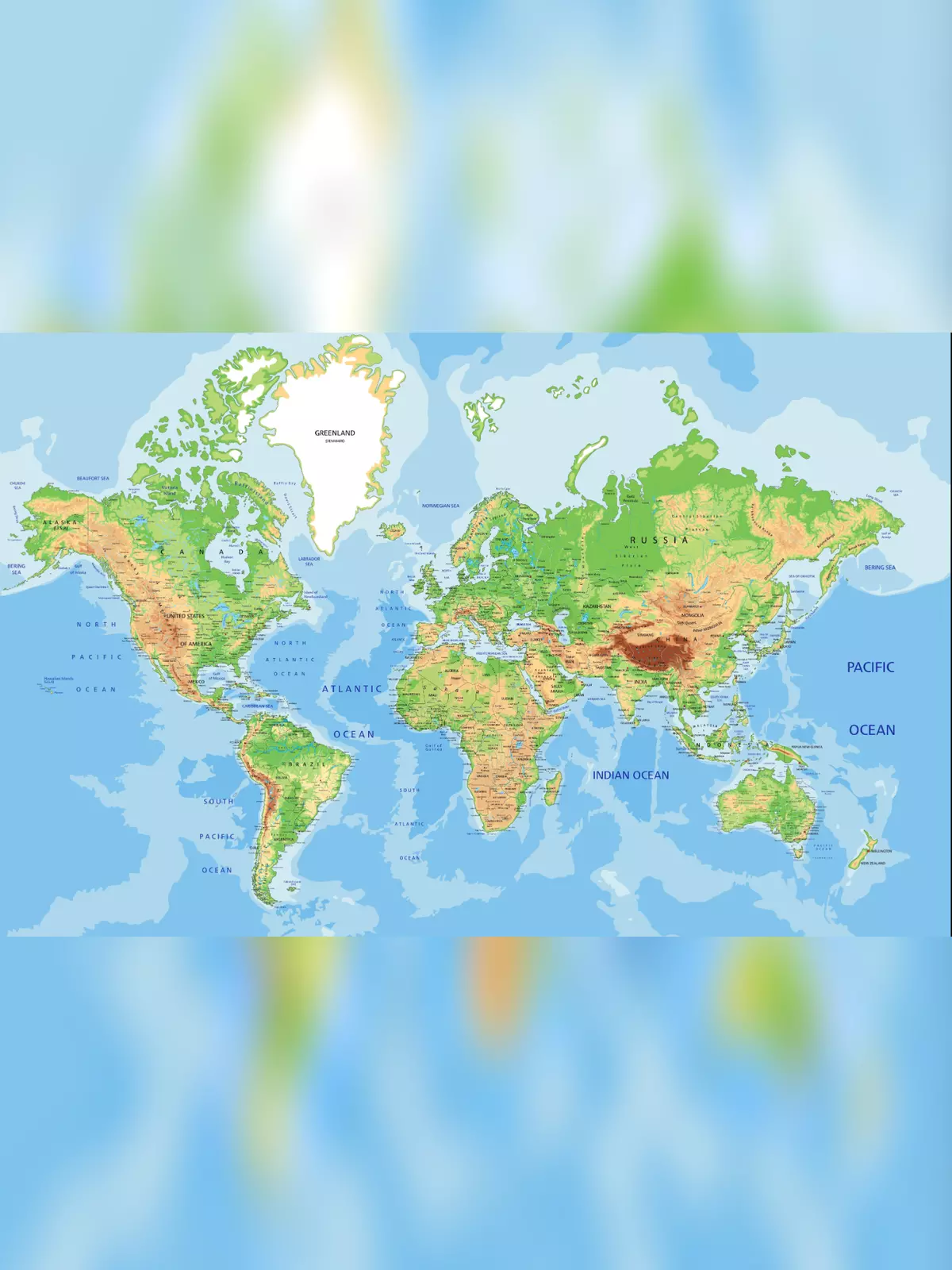World Physical Map - Summary
A world physical map is an important resource that visually showcases the Earth’s physical features, such as mountains, rivers, oceans, and deserts. This type of map emphasizes key geographical characteristics, including continents, oceans, large islands, deserts, mountains, countries, and capital cities. It clearly displays the surface of the Western Hemisphere, with South America at the center and Antarctica positioned at the bottom. 🌍
Understanding the World Physical Map
Key Features of the World Physical Map
- The total area of the Earth’s surface (both land and water) is slightly over 510 million km² when measured at sea level (100%). Out of this, around 360 million km² is water, making up almost 71% of our planet.
- The remaining surface, about 29%, is dry land, which includes rocks, stones, sand, mountains, deserts, rivers, lakes, and farmland. The total land area, including Antarctica, is roughly 150 million km².
- The highest point on Earth, measured from sea level, is the peak of Mount Everest. Also known as Chomolungma, it rises to 8,848 m (29,029 ft), including its snow-ice cover. This magnificent mountain is found in the Himalayan Range on the border of Nepal and China.
- The highest navigable lake is Lake Titicaca, which is the largest lake in South America, located in the Andes at an elevation of 3,812 m. It is nourished by 27 rivers, with the border between Bolivia and Peru running through the lake.
- The Pacific Ocean is the largest body of water, covering approximately 165 million km². It lies between the Americas (North and South America) to the east and Asia and Australasia to the west.
- The Atlantic Ocean, the world’s second-largest ocean with an area of nearly 80 million km², is located between the Americas to the west and Europe and Africa to the east.
- The Indian Ocean is the third-largest of the five oceans, covering about 70.5 million km².
With this information, you can readily understand and explore the wonders of our planet through a world physical map. For a more detailed exploration, be sure to download the PDF version available on our website!
